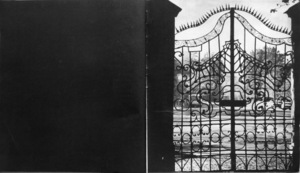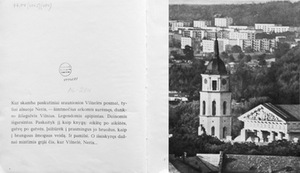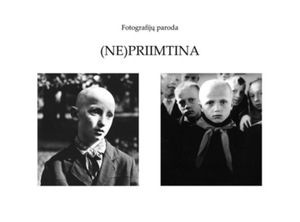About Lithuanian photography of the seventh decade 3
In brief: The author looks at Lithuanian photography of the seventh decade analysing the publications of that time and their reviews by art critics.
The publication Vilniaus Šiokiadieniai (Daily Life of Vilnius, 1965) with photographs and texts of Antanas Sutkus and Romualdas Rakauskas is analysed first of all, also, the author mentions the album of Algimantas Kunčius Senojo Vilniaus Vaizdai (Views of Old Vilnius, 1969). He turns attention to issues of social realism that was propagated in Soviet years and the attitude and work of photographers at that time.
The exhibition “(Un)acceptable” that was open at Vilnius Prospekto Gallery in May-June of 2013 proved that Lithuanian photographers also created different photographs that could not be found in publications or exhibitions as they were not acceptable to the authorities of those times.
The author marks that the limited number of themes, similar stylistics noticed among Lithuanian photographers in Soviet years did not have any bigger impact on the further career of photographers and art photography created by them.
The exhibition of nine Lithuanian photographers organised in Moscow in 1969 and the publication of Sovetskoje Foto printed later proved that one could speak about the original Lithuanian school of photography. The art critic Anri Vartanov emphasised the exceptionality of Lithuanian masters and the great difference among them, although they all belonged to one school of photography.
Therefore, the evaluations of Lithuanian photography discussed by the author may be distributed to two groups: interpretation of Lithuanian photography as a form of certain resistance to social realism versus interpretation of Lithuanian photography as one of the forms of social realism. In fact, the question regarding the conformism of Sutkus, Rakauskas and their colleagues is raised.











